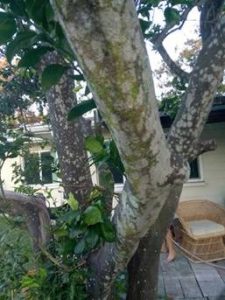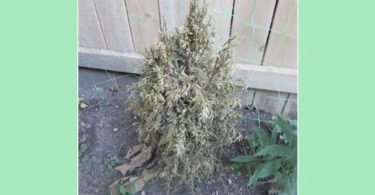Radko Tichavsky is a Czech born Mexican Agrohomeopath. He is a co-founder and director of Instituto Comenius in Mexico and author of Handbook of Agrohomeopathy, 2007 (Spanish) and Homeopathy for Plants, 2009 (Spanish) and creator and teacher of Holohomeopathy.
Agrohomeopathy Course!
Radko Tichavskyi is now offering a one semester virtual course in Agrohomeopathy (in English). You can learn how to define and analyze holons and how to repertorize the specific homeopathic treatment beyond just disease or pest names. You can find out more here: www.icomenius.edu.mx
A Materia Medica and Repertory for Plants: Mark Moodie hosts the website “Considera”, which provides a growing M.M and Repertory for plants and discusses resources for biodynamics and Agrohomeopathy .The website allows the world community to contribute their experiences in planting.
Dear Radko,
We live in Largo FL and purchased a home with three Citrus trees (oranges). One is dead and the other two are struggling to thrive. Their skin is peeling away and there is green algae on the bark. While some of the branches look to be thriving, others are dead. Climate in Largo, Florida:
52 inches of rain, on average, per year. On average, there are 246 sunny days per year in Largo. The US average is 205 sunny days. Temperature: high is around 90F degrees and winter low is 51F. Can you recommend a protocol that might help?

Thank you
Radko Tichavsky:
Dear Tom,
To save your citrus trees you have to perform several actions: first, cut the dry branches and seal the cuts with a mixture of vaseline and beeswax to prevent the spread of fungi. Secondly, decrease the irrigation and nourish the citrus with tea-compost. It is necessary to apply tea-compost once a month approximately 20: l to the trunk of each tree and once a month spray the tea-compost in foliar microdoses in the proportion of 1:40 (tea-compost: water). As regards the homeopathic remedies, this level of pathogenesis corresponds to Natrum carbonicum 30 CH (problems of water absorption, marked weakness, problems in the cuticle, presence of lichens and fungi, problem with the transport of sugars between the radicle and the cup). In addition you have to apply Lentinum edodes 12 CH (you can get it in oriental stores like shiitake). This fungus has 6 common metabolites with Citrus sp. The application of both Lentinum edodes and Natrum carbonicum will be carried out once a week by spray (approximately 5 l per tree) with Opuntia ficus-indicasap as adjuvant (0.5 sap per 20 liters of homeopathic preparation is used) once a month apply Salix alba 6 CH (this remedy has 17 common metabolites with Citrus sp.) in the irrigation around the trunk to stimulate better root growth.
[hr]
Hello Radko.
I recently found that the Mole Cricket lives in my garden. I do not know how long it has been there, but now I notice small holes in the ground everywhere. The damage is not big until now – only one strawberry plant and a few salad plants. But I find him horrifying and want to make him move to other parts of the garden, where I do not touch the ground. What is the best way? And why is he living in my garden? My garden has “turfish” ground, and it is situated at the lake. I have a lot of organic remains in the ground (which he loves I understood). So the environment is very favourable for mole crickets. I live in The Netherlands, in Oud Loosdrecht.
Thank you
Radko Tichavsky:
Dear Jolanta,
The Mole Cricket (Gryllotalpa gryllotalpa) is a species on the verge of extinction in some countries, for example in England, and in others it is considered a plague. We must understand its important connection with the holon. The Mole Cricket attracts some lizards, birds, cockroaches, other associated insects, predators and even nematodes (for example the Sterinernema carpocapsae) that help control their populations. Many methods of controlling this pest have been suggested but for the most part they are not effective or have only a temporary effect. Birds and field mice are the better biological control of the Mole Cricket. You can help control this insect by putting water troughs for the birds in your garden. You can also water the area of your garden where the Mole Crickets live with a little water with potassium soap, which will make the cricket come out of the soil. You can capture them and relocate them to another area of your garden where they do not hurt.As for the homeopathic remedies for the control of Gryllotalpa gryllotalpa you can apply Azadirachta indica 6 CH at the beginning of the summer and Ricinus communis 12 CH and specially Sansevieria trifasciata 3 CH in late summer for control of the adults. Also as remedies to invite them out of a certain area, you can use the sprays of Lactrodectus mactans 6 CH, Araneus diadematus 6 CH and Tarentula cubensis 6 CH.
[hr]
Dear Radko,
I would like to ask your advice about a Cymbidium orchid, (see photo below) which has always had problems with black spots on the leaves, even, on new shoots (Botrytis?). After it was repotted to a larger vessel it has still given me a beautiful spring bloom. But there remains the problem of these black spots (especially in the tips of the leaves); I administered Lentinula and Ganoderma 6 CH (by Helios Pharmacy in London where I also found Rhizoctonia Solani), then, Calcium Ammonium Phosphoricum 6 CH and 200 CH Carbonicum. I believe that this orchid (semi-terrestrial) needs a more specific remedy and, if possible, an indication of where to find the mother tinctures or potentised remedies for our plants.
A loving Thanks!
Roberto Migliorelli – Rome
Radko Tichavsky:
Dear Roberto,
The best homeopathic remedies for each plant are found in their original holon, being the orchids extracted from their native holons to “exotic” environments. Controlling some physiopathies and pests and diseases with local remedies can be difficult. Cymbidium spp. orchids are different from orchids with succulent leaves, for example (Cattleya spp.). The orchids Cymbidium spp.during the night present high levels of malate and citrate acids and their production depends on the ambient temperature. While in cooler environments of around 18 degrees Celsius malate prevails, and in warmer environments around 29 degrees Celsius, citrate predominates. The orchids Cymbidium spp. presents in their majority (and unlike other fat leafy orchids with CAM physiology) the C3 physiology. Like all orchids it has a close relationship with mycorrhizal fungi (for example Rhizoctonia solani)
For the orchids Cymbidium spp. the constitutional remedies are Manihot esculenta, Alocasia macrorhyza, Dioscorea alata, Cyrtosperma chamissonis, Amorphophallus campanulatus. The potency depends on the symptoms, and in this particular case you can apply Manihot esculenta 6 CH (elaborated from the roots) for control of fungal affections; you can also use Foeniculum vulgare (made from from seeds) Carum carvi (made from seeds) and Coriandrum sativum (made from seed) in potencies between 6 and 12 CH. To control the symptoms described, Carum carvi 12 CH should be applied. Once a week it is alternated with Manihot esculenta 6 CH. Both remedies have to be applied after the sun goes down.
As for homeopathic remedies, not all can be purchased in “human” homeopathic pharmacies. Therefore it will be necessary to learn to make mother tinctures and potencies yourself. It is very common among the agrohomeopaths and holohomeopaths that we prepare our own remedies, mainly because the plants materia medica does not match with the human one in most cases, and it is difficult to buy them. It can also be said that the homeopathic repertory in the orchids is a very specialized knowledge that is developing very recently. Returning to Hahnemannian pure experimentation will bring many advances in the future, especially with this type of fascinating plants.
[hr]
Dear Plant Doctor,
I have avocado trees that are bearing fruits and the skin of the fruits is being attacked by mites. I have had great success in treating people and animals with homeopathy.
Thank you
Gopal Pandey
Radko Tichavsky:
Dear Gopal,
Mites (members of the Tetranychidae family) are a bioindicator of excess nitrogen and dry and hot conditions in avocado crops. The excesses of artificial fertilizers or cow manure and the application of neonicotinoids pesticides together with dry and hot conditions prepare a fertile condition for this pest. The main remedy for this type of problem in Persea americana is Sulphur 12 CH, Ruta graveolens 12 CH and nosode of the soil 12 CH with Opuntia ficus-indica sap and Helianthus annuus oil as adjuvant applied alternately once a week. This remedy should be applied by spraying after the sun goes down, to avoid burning of the plants. One application per week, repeated four or five times (weeks) usually solves the problem completely.







